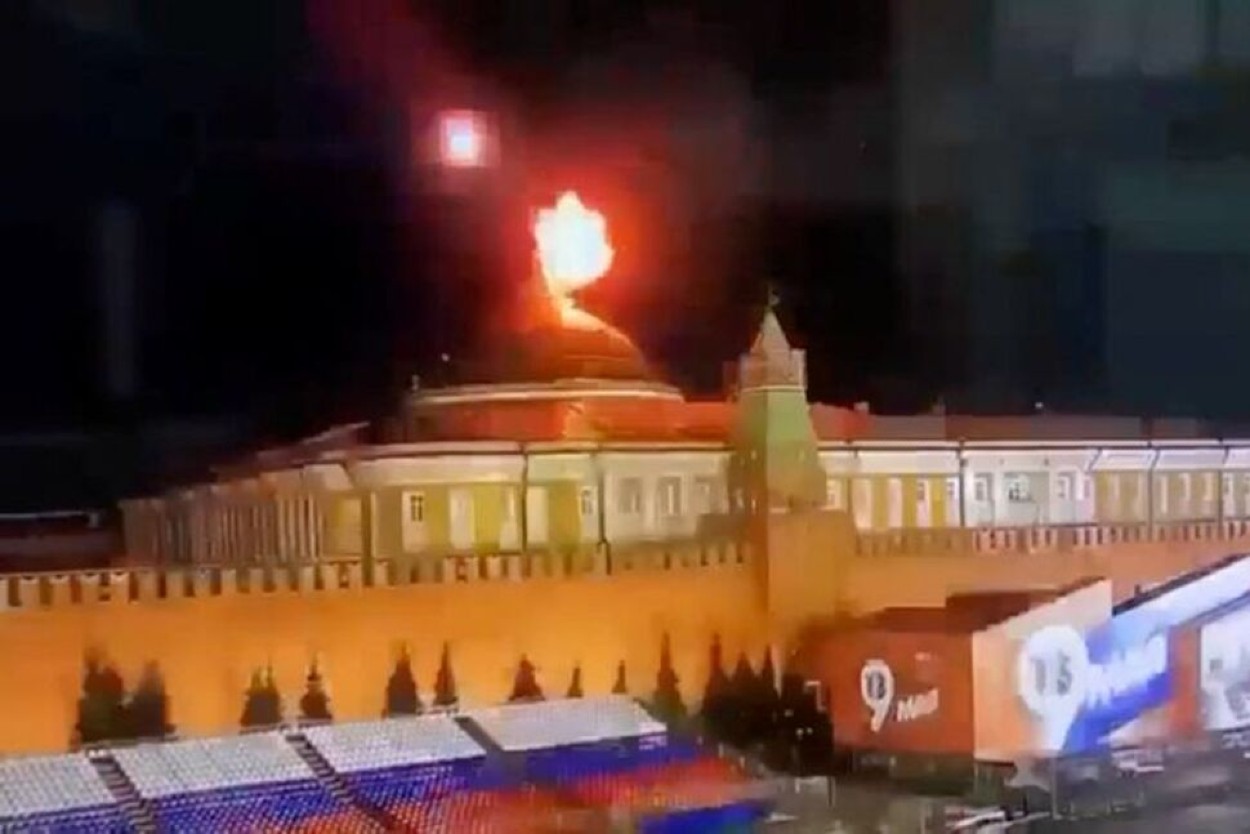In a bid to outwit Ukrainian intelligence and counter the mounting drone attacks by Ukrainian forces, the Russian military has resorted to painting images of aircraft on an airfield near Crimea.
This deceptive tactic is believed to be part of their efforts to confuse and mislead their adversaries in the ongoing conflict.
In a noteworthy revelation, open-source intelligence expert Brady Africk shared satellite imagery exposing what appears to be an attempt by the Russian military to confuse Ukrainian drones.
The imagery showcased aircraft images painted on an airfield near Crimea. Accompanied by photos taken between June 26 and July 16, Africk tweeted, “Russian forces painted newly constructed areas of Yeysk air base to resemble military aircraft.”
According to the images shared by Africk, the latest satellite image displayed an increase in parked planes at the Yeysk air base, totaling five, compared to the previous photo taken just over three weeks earlier.
Russian forces painted newly constructed areas of Yeysk air base to resemble military aircraft.
These apparent decoys were created over the past few months at the base, which is one of several used by Russian aircraft operating in Ukraine. pic.twitter.com/QLyGLMJ7A1
— Brady Africk (@bradyafr) July 21, 2023
Africk noted that these apparent decoys, resembling aircraft, were crafted over the past few months at the airbase, which serves as one of several locations utilized by Russian aircraft operating in Ukraine.
Situated in Russia’s southwestern Krasnodar region near the town of Yeysk, the airbase rests on the shores of the Sea of Azov, in proximity to the Crimean Peninsula that Russia annexed in 2014.
In a retweet of Africk’s post, the open-source intelligence account named Evergreen Intel brought attention to a broader pattern, revealing that this practice of painting deceptive features extends beyond a single instance.
Satellite imagery of the S-400 base located in Golovinskiy District, Moscow (55.83983, 37.56247) indicated the presence of painted vehicle parking areas.
The Twitter user suggested that while these markings may serve practical purposes for guiding parking during various conditions, there is also a possibility that they could also potentially function as decoys to confuse satellite reconnaissance, depending on the resolution of the satellite images.
Drone Attacks Against Russia
Amid the ongoing war, both sides have resorted to using decoys as a strategic measure to confound and deceive enemy forces. Such tactics are employed to gain a tactical advantage and maintain an element of surprise in the ever-evolving battlefield dynamics.
The recent paintings of aircraft are also likely intended to deceive and mislead Ukrainian forces, given the escalating frequency and intensity of drone attacks targeting Russian land.
As for the latest drone attack on Russia, Russia’s defense ministry announced on July 24 that their air defense forces had “suppressed” a Ukrainian drone attack on Moscow, accusing Kyiv of conducting a “terrorist act” against the Russian capital.
Last year, Ukraine launched a series of drone attacks on strategically important airbases deep within Russian territory, resulting in casualties among Russian personnel and allegedly causing damage to their military hardware.
On May 3, an audacious drone attack targeted the Kremlin, with allegations suggesting it was executed by Ukraine’s special military or intelligence units. On May 30, multiple drones appeared in the skies above Moscow, Russia’s capital, but no major damage ensued.

It is believed that the drone attacks on Moscow serve as “instruments of psychological warfare” to disturb and unsettle the Russian nomenklatura, while the attacks on military bases near the border region are seen as part of the broader counteroffensive strategy being employed by Ukraine.
Thus, the decision to paint aircraft on military bases is likely aimed at thwarting such attacks, as decoys have a history of being employed in warfare.
In the initial stages of the invasion, US intelligence officials disclosed that Moscow’s Iskander-M missiles, presumed to be launched from mobile platforms in Belarus and Russia, were utilizing dart-shaped munitions as decoys to deceive Ukrainian air defense systems.
In addition to Russia’s use of decoys, Ukraine has reportedly employed such defense tactics. Several Western analysts earlier claimed that they believed that a significant portion of the HIMARS (High Mobility Artillery Rocket System) that Russia claimed to have destroyed was actually inflatable decoys produced by Inflatech, a Czech tech company.
The Czech company said they could manufacture 35 of these decoys monthly, strategically using them to draw Russian munitions away.
These inflatable decoys can be conveniently inflated through electric or gas-powered blowers and are designed to emit a heat signal, which can effectively deceive infrared sensors.
- Contact the author at ashishmichel(at)gmail.com
- Follow EurAsian Times on Google News




